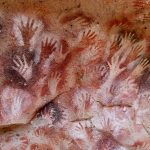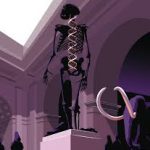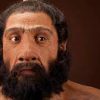Two-million-year-old skull of human ‘cousin’ unearthed0
- Ancient Archeology, From Around the Web
- November 10, 2020
Australian researchers say the discovery of a two-million-year-old skull in South Africa throws more light on human evolution.

Australian researchers say the discovery of a two-million-year-old skull in South Africa throws more light on human evolution.

An examination of two documented periods of climate change in the greater Middle East, between approximately 4,500 and 3,000 years ago, reveals local evidence of resilience and even of a flourishing ancient society despite the changes in climate seen in the larger region.

Around 600,000 years ago, humanity split in two. One group stayed in Africa, evolving into us. The other struck out overland, into Asia, then Europe, becoming Homo neanderthalensis – the Neanderthals. They weren’t our ancestors, but a sister species, evolving in parallel.

The genomes of our closest relatives, Neanderthals and Denisovans, have been sequenced and compared with that of modern humans. However, most archaic individuals with high-quality sequences available have been female. In new research, a team of geneticists from the United States, China and Europe has sequenced the paternally inherited Y chromosomes from three Neanderthals and two Denisovans; comparisons with archaic and modern human Y chromosomes indicated that, similar to the maternally inherited mitochondrial DNA (mtDNA), the human and Neanderthal Y chromosomes were more closely related to each other compared with the Denisovan Y chromosome; this result supports the conclusion that interbreeding between early Homo sapiens and Neanderthals replaced the more ancient Denisovian-like Y chromosome and mitochondria in Neanderthals.

One day about 120,000 years ago, a few humans wandered along the shore of an ancient lake in what is now the Nefud Desert in Saudi Arabia. They may have paused for a drink of fresh water or to track herds of elephants, wild asses, and camels that were trampling the mudflats. Within hours of passing through, the humans’ and animals’ footprints dried out and eventually fossilized.

When did something like us first appear on the planet? It turns out there’s remarkably little agreement on this question.

Darwin would be delighted by the story his successors have revealed

The answer is hotly contested.

Today’s humans carry the genes of an ancient, unknown ancestor, left there by hominin species intermingling perhaps a million years ago.

Funeral rites emerged at the dawn of humanity. Rituals involved in the passage into the afterlife and proper care of the dead have always been sacred, but the reasons behind many funerary practices remain buried in time.



